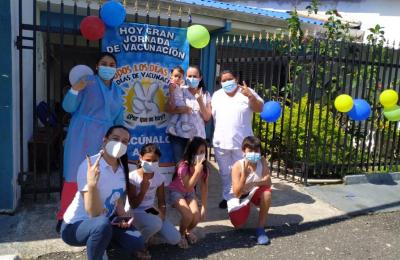Excess mortality in 2020 in the working-age population of nine Latin American countries
Objective
Estimate the impact of the COVID-19 pandemic in 2020, through excess all-cause mortality and potential years of productive life lost (YPLL) in the working-age population, in selected Latin American and Caribbean countries.
Methods
Study based on data on deaths from all causes from age 15 to 69 years, mainly from national institutes of statistics. Estimates of expected deaths were based on reported deaths from 2015 to 2019. Excess mortality was estimated using the P indicator, standardized mortality ratio (SMR), and potential YPLL up to age 70 years.
A systematic review of the prevalence of selected sexually transmitted infections in young people in Latin America
Objective
To estimate the burden of Chlamydia trachomatis (CT), Neisseria gonorrhoeae (NG), Treponema pallidum (TP), and human papillomavirus (HPV) infections among people aged 10 to 25 in Latin America and the Caribbean.
Primary health care expenditure in the Americas: measuring what matters*
This special report compares the measurement of primary health care (PHC) expenditure proposed by the Organization for Economic Cooperation and Development (OECD) and by the World Health Organization (WHO), according to the global framework for reporting health expenditures (SHA 2011) in three countries in the Region of the Americas.
Systematic review on reducing missed opportunities for vaccinations in Latin America
- Read more about Systematic review on reducing missed opportunities for vaccinations in Latin America
Objectives
To estimate the prevalence of missed opportunities for vaccination (MOV) in Latin America and the effect of interventions targeting health systems, health workers, patients, and communities on MOV.
Multidimensional analysis of the evolution of the COVID-19 pandemic in countries of the Americas
Objective
To evaluate the evolution of the COVID-19 pandemic in countries of the Americas, comparing health system data from before the appearance of the virus in the Region, accumulated cases and deaths before the deployment of public immunization strategies, and the current state of vaccination.
Methods
An HJ-Biplot multivariate analysis and cluster analysis were performed for 28 countries in the Region of the Americas at three points in time: December 2019, December 2020, and December 2021.
Implementación del plan de acción de recursos humanos en salud y la respuesta a la pandemia por la COVID-19
Objetivos
Sistematizar y analizar las acciones de respuesta relacionadas con los recursos humanos en salud durante la pandemia reportadas por 20 países de la Región de las Américas en la evaluación de medio término del Plan de acción sobre recursos humanos para el acceso universal a la salud y la cobertura universal de salud 2018-2023 (Organización Panamericana de la Salud, 2018), y valorar la trascendencia de las políticas y la gestión de los recursos humanos expresadas en la Estrategia y el Plan de recursos humanos durante emergencias sanitarias y en tiempos normales.
Pillars and lines of action for integrated and people- and community-centered health systems
This paper presents the position of the Latin American working group of the International Foundation for Integrated Care (IFIC). The working group brings together various Latin American actors and organizations in support of actions that facilitate the transformation of health systems in the region towards integrated systems that focus on people not as isolated individuals but as subjects of law in the complex social and environmental contexts where they live and interact.
Inequalities in the Coverage and Quality of Prenatal Care in Peru, 2009-2019
Objective
To describe the coverage of quality prenatal care and trends in inequality of care among pregnant women in Peru in the period 2009–2019.
Methods
Cross-sectional analysis, with data on prenatal care from the Demographic and Family Health Survey for the years 2009, 2014, and 2019. The number and quality of visits during pregnancy were considered. Absolute and relative measures of health inequality were calculated for stratified groups.












